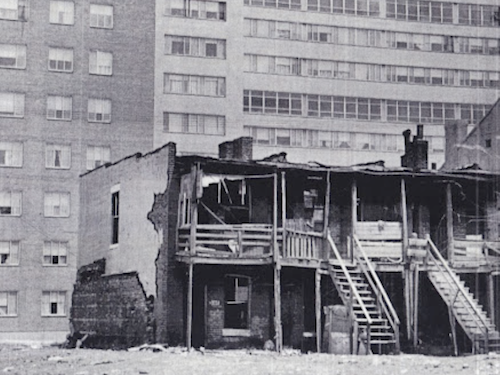St. Louis Population May Drop Below 300K In 2020 Census
We’re still seven years away from the 2020 census but it’s already on my mind. Last month I attended at I attended a lunch where the two speakers talked about Detroit and St. Louis. From the invite:
Detroit’s New Plan for Urban Regeneration and What It Means for St. Louis
Speakers:
Alan Mallach, senior fellow of the National Housing Institute, is the author of many works on housing and planning, including Bringing Buildings Back and Building a Better Urban Future: New Directions for Housing Policies in Weak Market Cities. He served as director of housing and economic development for Trenton, N.J. from 1990 to 1999. He is also a fellow at the Center for Community Progress and the Brookings Institution.
John Gallagher is a veteran journalist and author whose latest book, Reimagining Detroit: Opportunities for Redefining an American City, was named by The Huffington Post as among the best social and political books of 2010. He joined the Detroit Free Press in 1987 to cover urban and economic redevelopment efforts in Detroit and Michigan, a post which he still holds. His other books include Great Architecture of Michigan and, as co-author, AIA Detroit: The American Institute of Architects Guide to Detroit Architecture.
One of the two said Detroit has accepted that it has shrunk and it is likely to shrink more in the 2020 census, that St. Louis is also likely to lose population again — possibly falling below 300,000. The fact is this may well happen.
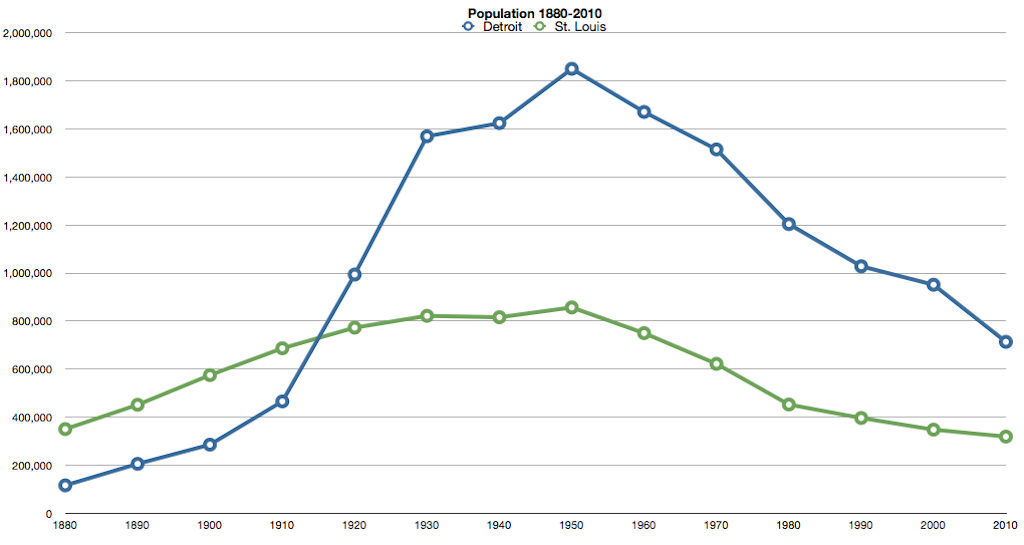
Still, others love to dump on St. Louis. For example, a recent opinion piece in the Kansas City Star titled Kansas City is rising as St. Louis keeps falling:
• In 1950, St. Louis was the eighth largest U.S. city, with 857,000 people. But by 2010, St. Louis had lost a stunning 538,000 people and plummeted to the 58th largest city, with only 319,000 residents.
• In 1980, St. Louis was still Missouri’s largest city, barely ahead of Kansas City. But by 2010, Kansas City’s population of 460,000 was 44 percent larger than St. Louis’.
In response friend Matthew Mourning posted on Facebook:
The 1940 city limits of KC were a 58 square mile box of the Missouri River (N), State Line Rd. (W), Blue River (E), and 79th Street (S). (St. Louis is, and has been since the 1876 divorce, 62 square miles, while present day Kansas City tops out at 315 sq. mi. after a series of annexations).
Those 1940 KC city limits had a population of 400,178. In 2010, the population of the same approximate area was *184,803*. That’s a drop of ~215,000, or nearly 55%. St. Louis’s core loss was around 62% since 1940. – Matthew Mourning via Facebook
The point is to look at what’s happening in the core, not including ring after ring of low-density sprawl. Our fixed city limits is the regional core whereas cities like Kansas City and Oklahoma City were able to annex as population fled their core.
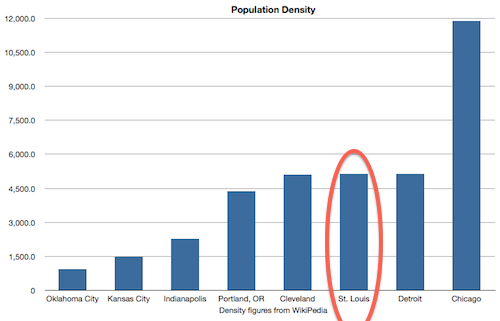
Kansas City is denser than Oklahoma City, but that’s not saying much. St. Louis, Detroit, & Cleveland being denser than the acclaimed Portland OR is huge. But numbers themselves can be deceiving, Portland has very dense central neighborhoods. It’s very walkable & cyclist friendly.
In the 2010 census our tracks that had investment in becoming more urban (downtown, near north & south) saw increases in population, while north & south St. Louis continued to lose population. Wake up St. Louis, we need to make the entire City of St. Louis urban/walkable/bikeable. Not in a half-ass way either, the whole deal with transit, strong pedestrian plan, modern zoning.
Auto-centric monstrosities like Loughborough Commons can’t keep happening if we expect to stop the loss of population. But I don’t see any willingness or leadership to prioritize urbanizing more than a few pieces here and there, fragmented in true St. Louis fashion.
If we stay on our current course I wouldn’t be surprised if we drop below 300,000 when the 2020 census comes out in 2021.
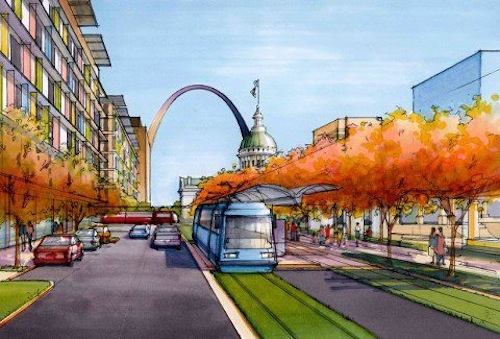
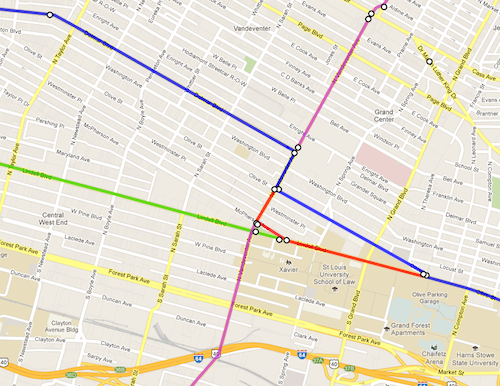
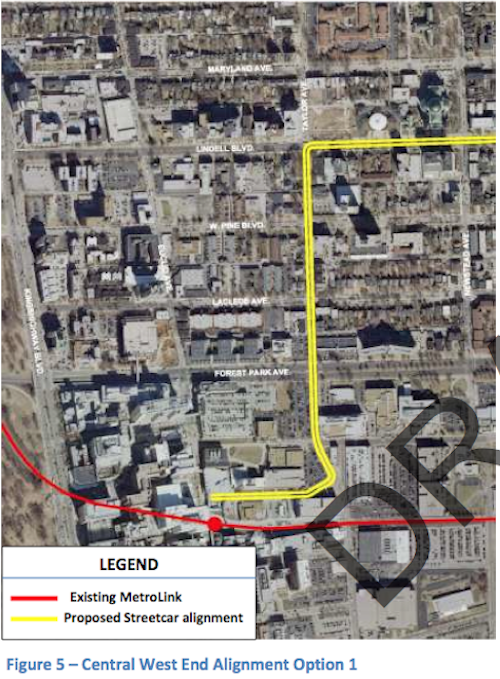
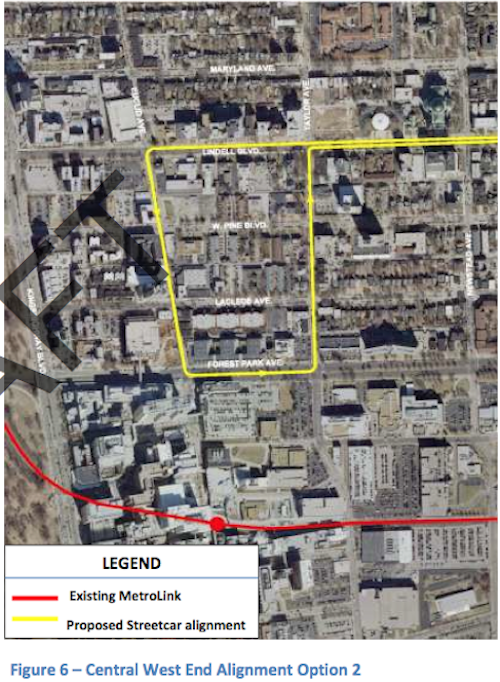
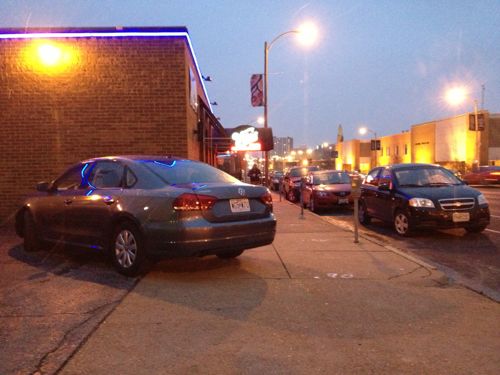
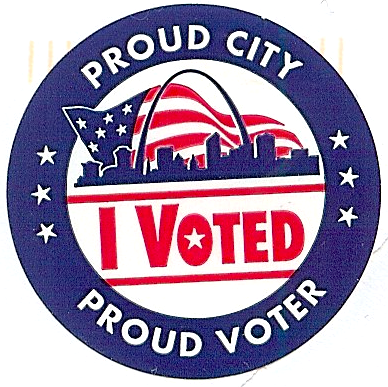 Let’s take a look at all 17 races to see how who was selected to represent each party in the April 2nd primary:
Let’s take a look at all 17 races to see how who was selected to represent each party in the April 2nd primary: